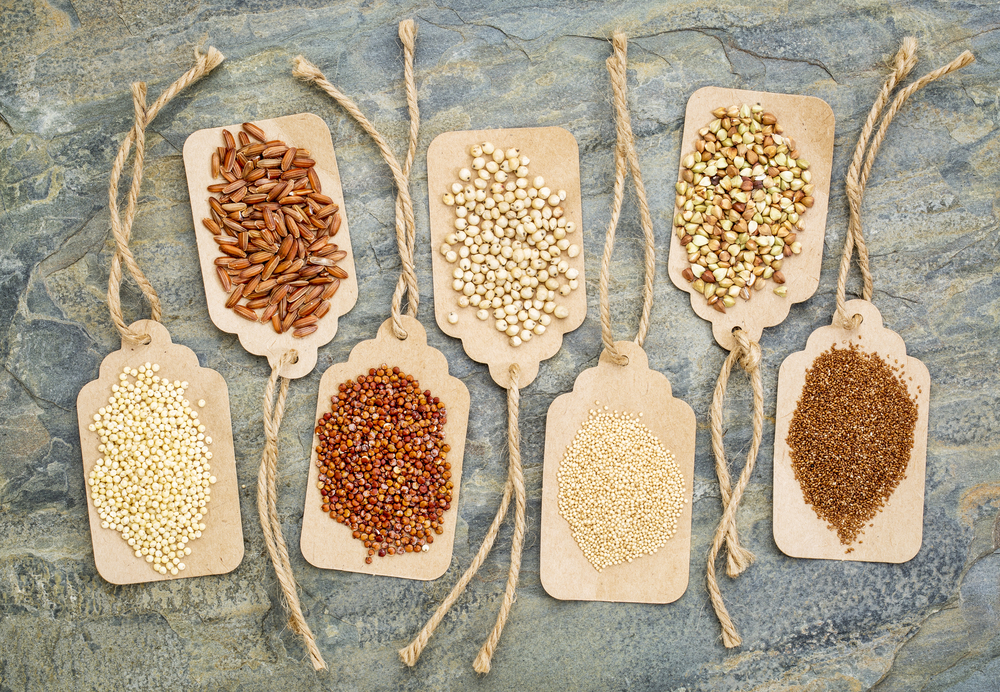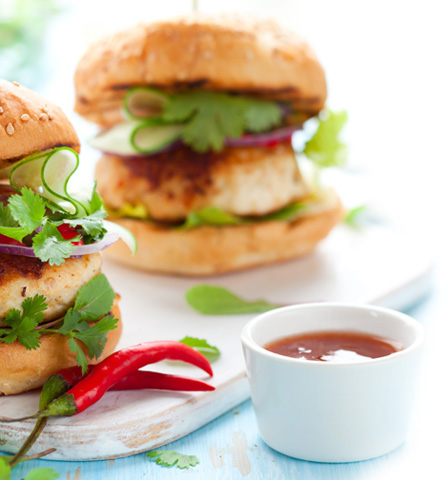Guide to Naturally Gluten-Free Whole Grains

During National Nutrition Month, we are focusing on the importance of eating whole grains. Grains provide many nutrients that are vital for the health and maintenance of our bodies. However, there are many people who can’t properly digest gluten who must choose their whole grains carefully. But, did you know that most whole grains are naturally gluten-free? Whole grains are packed with fiber and other nutrients that help meet dietary needs, so fitting them into a gluten-free diet is important to ensure balanced nutrition!
Check out these naturally gluten-free whole grains options below:
Amaranth: Amaranth has a peppery taste with a pleasantly sweet, grassy aroma. It pairs well with squash, corn, sesame, cinnamon, vanilla, and chocolate. To cook amaranth, combine one cup of dried grain with 2 cups of liquid. Bring to a boil then simmer for 15 to 20 minutes yielding 2.5 cups of cooked grain. Amaranth that has been cooked and chilled can be used in place of cornstarch as a thickening agent in soups, jellies, or sauces!
Buckwheat: Buckwheat is robust and earthy, pairing well with dried fruit, dark spices, beets, walnuts, and hazelnuts. To cook buckwheat, add one cup of dried grain with 2 cups of liquid. Bring to a boil, then simmer for 20 minutes. This will yield 4 cups of cooked grain. Buckwheat can be used in place of other carbohydrates such as rice, couscous, potatoes, or pasta.
Corn: Corn brings a sweet taste to any dish, it pairs well with chilies, berries, aromatic spices, tomatoes, peppers, cumin, and beans. Corn can be boiled, grilled, or roasted. It can be eaten right off the cob, or added to a salad, soup, or casserole. To cook whole cornmeal such as polenta or whole grits, add one cup of cornmeal with 4 cups of liquid. Bring to a boil, then simmer for 25-35 minutes. This will yield 2.5 cups of cooked grain.
Millet: Millets are warm and buttery, pairing well with mushrooms, herbs, warm spices, scallions, and squash. They are cooked with varying amount of liquid to achieve different textures—from fluffy and light, to mashable and creamy. Start with 2.5 cups of liquid to 1 cup of grain. Bring the grains and liquid to boil, then simmer for 20-30 minutes. For a creamier texture, start with more water.
Oats: Oats have a sweet, toasty aroma and pair well with cinnamon, dried and fresh fruit, coffee and coconut, as well as thyme, mushrooms, and walnuts. To cook steel cut oats, bring 4 cups of liquid to a boil. Add one cup of oats and simmer for 30 minutes. This will yield 3 cups of cooked grain. Although oats are naturally gluten-free, many brands of oats may contain trace amounts of gluten. Be sure to look for oats labeled as certified gluten-free!
Quinoa: Quinoa is incredibly versatile and pairs well with almost anything you can find in your pantry! It has a firm chew when chilled, making it great for both warm and cold grain salads. Be sure to check the package of your quinoa to see if it is already pre-rinsed. If not, be sure to rinse well before cooking to ensure the bitter coating has been washed away. To cook quinoa, cook one cup of dried grain with 2 cups of liquid. Bring to a boil then simmer for 12 to 15 minutes yielding 3 cups of cooked grain.
Brown Rice: Brown rice has a neutral, toasty flavor that accentuates other flavors and pairs well with just about everything! Brown rice is great as a base in curries, stir fries, risottos, and rice pudding. To cook brown rice, add one cup of dry rice with 2.5 cups of liquid, bring to a boil and simmer for 25-45 minutes. This will expand to 3 cups of cooked grain.
Try out some of these gluten-free whole grains and share with us how you incorporated them into your meals!

